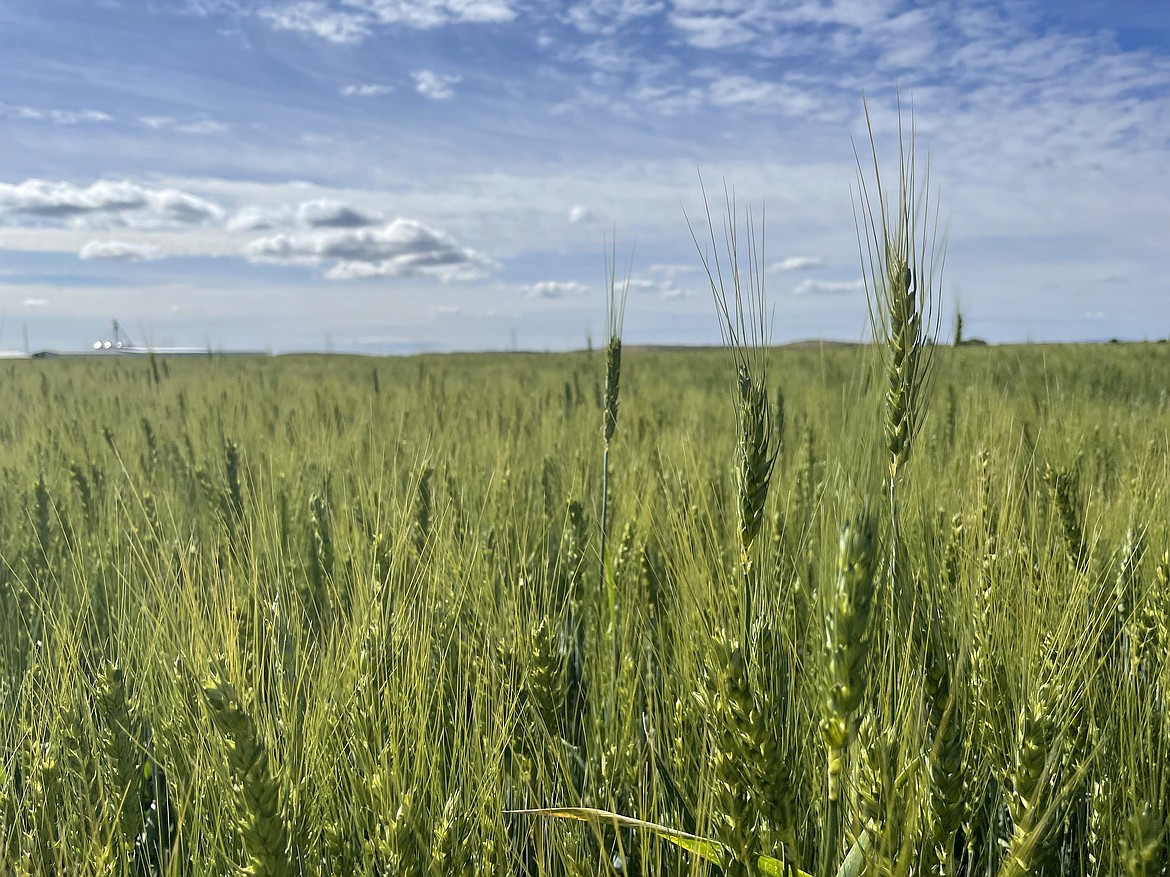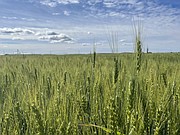State reports smallest wheat crop in decades; barley crop also down
CHARLES H. FEATHERSTONE | Hagadone News Network | UPDATED 4 years, 2 months AGO
MOSES LAKE — It was a rotten growing season for wheat farmers in the Columbia Basin, as the state’s wheat growers reported the smallest harvest in 57 years.
“This is a pretty tough year for wheat farmers,” said Joe Bippert, program director for the Washington Grain Commission in Spokane. “We last had production this low in 1964.”
According to the U.S. Department of Agriculture’s annual Small Grains 2021 Summary, which was published Sept. 30, while overall wheat acres sown in Washington in 2021 remained relatively unchanged from 2020, at just above 2.3 million acres, yields in 2021 plummeted to 39.1 bushels per acre, from 72.4 in 2020, prompting total wheat production in 2021 to fall by nearly 50% to 87.1 million bushels, from 166 million bushels in 2020.
Chris Mertz, director of the northwest region for the USDA’s National Agricultural Statistics Service in Portland, wouldn’t directly attribute the decline to the drought. But he said the lack of rainfall during the spring and summer didn’t help.
“Obviously, we did not get the moisture we needed,” Mertz said. “In other years, we had timely rain.”
Bippert said the rain stopped falling at the worst possible time, just as farmers were planting spring wheat.
“Timing is important,” Bippert said. “There was not enough moisture.”
Bippert also said the heat wave in late June and early July — when temperatures in the Columbia Basin hit as high as 115 degrees — also prompted a lot of the dry land wheat to mature too early.
“It didn’t get to the right height,” he said. “It didn’t get to sit and be green and fill the kernels.”
That means grain that is smaller, higher in protein, but yields less, Bippert explained.
And the USDA data reflects that, noting spring wheat — wheat planted in the early spring, as opposed to winter wheat, which is planted in the late autumn — across the region took a bigger hit from the drought than winter wheat, which at least had a little snowmelt to provide moisture.
Spring wheat production in 2021 was 16 million bushels, half of 33.2 million in 2020, with yields also falling by more than half to 30 bushels-per-acre in 2021 from 61 bushels-per-acre in 2020.
Winter wheat harvests and yields in Washington suffered, as well, however, falling to 70.9 million bushels at 42 bushels-per-acre in 2021 from 133 million bushels at 76 bushels-per-acre in 2020.
The heat and drought also affected the region’s barley harvest. According to the USDA, while Washington farmers planted around 70,000 acres in 2021 — down from 90,000 in 2020 — 2021 harvest and yield plummeted to 2.6 million bushels at 38 bushels-per-acre from 6.4 million bushels at 90 bushels-per-acre in 2020.
Mertz added the 2020 yield was something of an anomaly, with recent yields in Washington state normally around 70 bushels-per-acre.
Still, he said it was the lowest barley harvest in Washington since 1977.
Bippert said when combined with strong demand, prices for the Pacific Northwest’s soft white wheat have nearly doubled to around $10 per bushel at the beginning of October from an average of $5.87 per bushel in October 2020.
“The market is doing what the market does,” he said.
“Some producers were able to take advantage of higher prices, if they had wheat to sell,” Mertz said. “There’s a lot less wheat to sell.”
Charles H. Featherstone can be reached at [email protected].
ARTICLES BY CHARLES H. FEATHERSTONE

Potato prices up, sales down for first quarter 2023
DENVER — The value of grocery store potato sales rose 16% during the first three months of 2023 as the total volume of sales fell by 4.4%, according to a press release from PotatoesUSA, the national marketing board representing U.S. potato growers. The dollar value of all categories of U.S. potato products for the first quarter of 2023 was $4.2 billion, up from $3.6 billion for the first three months of 2022. However, the total volume of potato sales fell to 1.77 billion pounds in the first quarter of 2023 compared with 1.85 billion pounds during the same period of 2022, the press release noted. However, total grocery store potato sales for the first quarter of 2023 are still above the 1.74 billion pounds sold during the first three months of 2019 – a year before the outbreak of the COVID-19 pandemic, the press release said.

WSU Lind Dryland Research Station welcomes new director
LIND — Washington State University soil scientist and wheat breeder Mike Pumphrey was a bit dejected as he stood in front of some thin test squares of stunted, somewhat scraggly spring wheat at the university’s Lind Dryland Research Station. “As you can see, the spring wheat is having a pretty tough go of it this year,” he said. “It’s a little discouraging to stand in front of plots that are going to yield maybe about seven bushels per acre. Or something like that.” Barely two inches of rain have fallen at the station since the beginning of March, according to station records. Pumphrey, speaking to a crowd of wheat farmers, researchers, seed company representatives and students during the Lind Dryland Research Station’s annual field day on Thursday, June 15, said years like 2023 are a reminder that dryland farming is a gamble.

Wilson Creek hosts bluegrass gathering
WILSON CREEK — Bluegrass in the Park is set to start today at Wilson Creek City Park. The inaugural event is set to bring music and visitors to one of Grant County’s smallest towns. “I've been listening to bluegrass my whole life,” said the event’s organizer Shirley Billings, whose family band plays on their porch every year for the crowd at the Little Big Show. “My whole family plays bluegrass. And I just wanted to kind of get something for the community going. So I just invited all the people that I know and they’ll come and camp and jam.” ...



